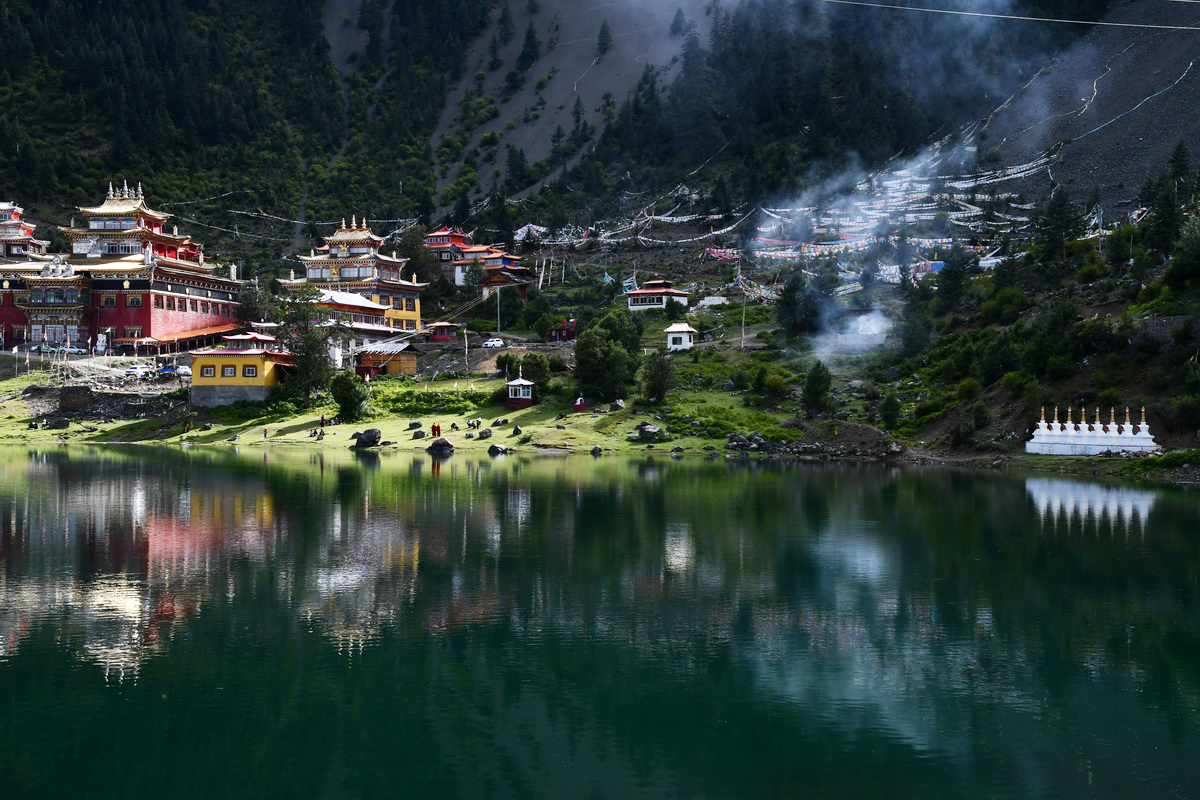
Embedded deep within one of the remote mountain valleys of the Garzě Tibetan Autonomous Prefecture, Tsoka Lake appears like a small jewel embedded into the surrounding hillside. The lake itself only covers a surface area of around 3 square kilometres (1 sq. mi), but don’t let its small size fool you. As the old saying goes, big things often come in small packages! The name “tsoka” roughly translates to mean “the black water in the stone forest,” which is in reference to the lake’s characteristically dark waters and the surrounding snow-capped mountains that loom over it. As proof of the lake’s holy status, you’ll find numerous halls and buildings situated along its shores, which were all built in the traditional Tibetan style and together make up the Tsoka Monastery.
The monastery itself dates back to the 14th century and is one of few monasteries that follows the teachings of two different sects of Tibetan Buddhism. Although the Gelug or “Yellow Hat” sect of Tibetan Buddhism continues to be by far the most popular, monks living in the Tsoka Monastery follow a combination of teachings from the Nyingma and Kagyu sects, which rank alongside the Gelug sect as two of the four most important sects of Tibetan Buddhism. In fact, the Nyingma sect is widely considered to be the oldest, with a history that stretches all the way back to the 8th century!
Make your dream trip to the Huiyuan Monastery come true on our travel: